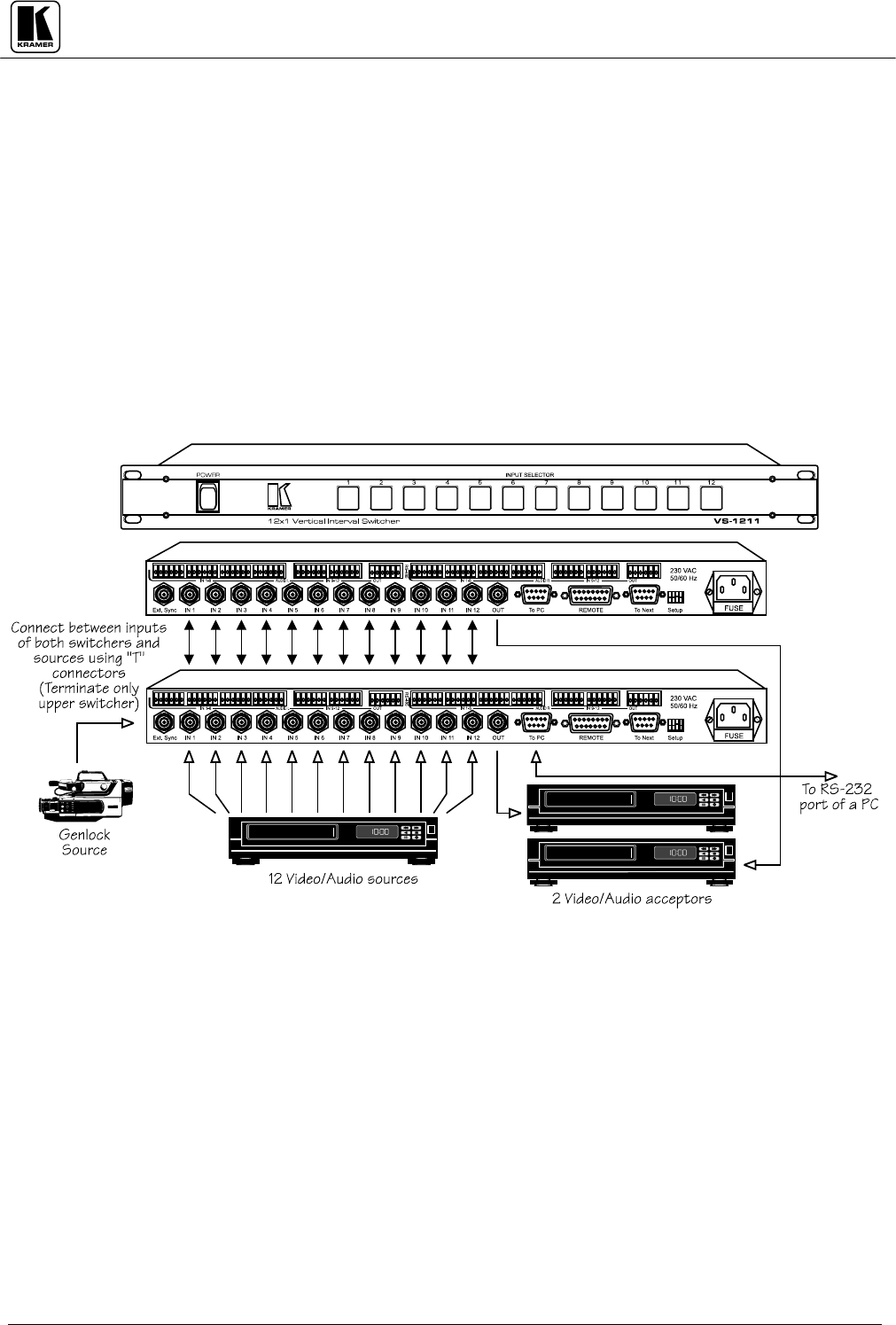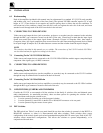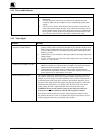
KRAMER ELECTRONICS LTD.
18
3. Connect the output from video source #1 to the first switcher input #1, then to the second switcher input #1
using a T or Y connector. Repeat for source #2 and input #2, etc.
4. Connect one acceptor to the output of one switcher and another acceptor to the output of the other
switcher. You now have a twelve input switcher complex with two outputs.
5. You can continue to expand the number of outputs by adding a third switcher, etc., to obtain a 12x3
switcher, etc. In such cases, relocate to their alternate position, all input jumpers in all switchers except the
last, so that all the lines are properly terminated by 75ohm. Audio can be connected in a similar manner,
but you do not have to open switchers and remove jumpers, just connect the wires from audio input to
audio input. There is no need for special termination since the input impedance is high.
6. For RS-232 control of the system, connect the PC to the Master switcher via the null modem adapter.
7. Each switcher in the configuration should be allocated a unique machine number and the "Reply" option
should be set to ON (see Table 3: DIP Switch Settings). Jumper J35 should be relocated to its alternate
position.
8. The system may also be controlled via its RS-485 port (see section 12.3 above).
A typical switchers setup where additional outputs are added is described in Figure .
Figure : Connecting Two Switchers for adding More Outputs
12.5 Adding Inputs
Two or more VS-1211 switchers can be interconnected to function as a 24x1 or a 36x1 etc., switcher as follows:
1. Make sure that jumper J35 in at least one of the switchers is in its factory located position (See Figure ).
If necessary, carefully remove the covers of the switchers to do so.
2. Connect a straight, 9 wire flat cable from the "To Next" DB-9 connector on the first switcher to the "To
Next" DB-9 connector on the second switcher, from the second to the third and so on, until all the required
switchers are interconnected. Make sure that the interconnecting lengths of cable are as short as possible.
3. Interconnect the switchers via their RS-485 ports ("A" to "A", "B" to "B", etc.).
4. Assign a unique machine number to each of the switchers. Set DIP switches as in "Table of DIP Switch
Settings" (see section 9).
5. On all the units, set the Dipswitch "Reply" option to ON.
6. In order to feed the sync information from one of the units to all the others, interconnect the units via their
"To Next" connectors using a flat cable. In this case, jumper J34 must be set in its factory located position
in the unit with the Sync source, but in its alternate position in the others.


















